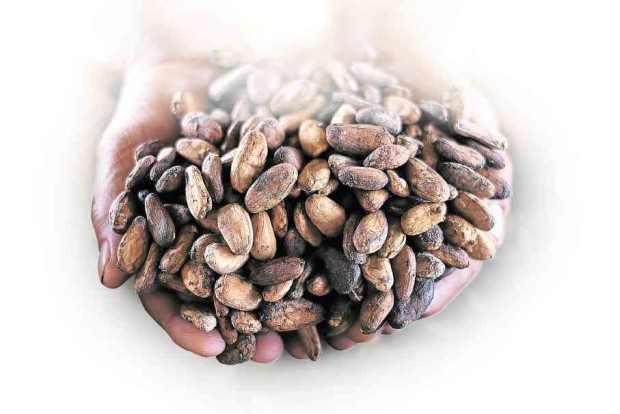San Isidro: Town built by cacao

CACAO beans being produced in the town of San Isidro, Davao del Norte province
RENE LUMAWAG/CONTRIBUTOR
FROM the moment the cacao beans are fed into the crusher to the time these are panned out to the molder as sticky glue, Emma Cuyos, 60, did not take her eyes off the chocolate-churning process.
One stray moment and the method is compromised, the quality in doubt. For Cuyos is no average factory supervisor. Her knowledge dates 150 years back to a great-grandmother in Cebu who kept the art of chocolate-making a guarded secret.
It’s the secret that she inherited from her mother and embodies all she knows about making the dark-colored, mouth-watering sikwate or chocolate.
The product now translates into 500 tons of chocolate produced annually by the San Isidro, Davao del Norte-based Chokolate de San Isidro (CSI) which exports its products to Europe, Japan, Australia and Singapore.
Ideal temperature
Article continues after this advertisementThe town of San Isidro (population: 25,000) is blessed with fertile soil and a near-rainforest temperature that has proved ideal in the propagation of fruit trees, bananas and cacao. Municipal officials refer to their place as “the town that cacao (Theobroma cacao) built.”
Article continues after this advertisementDante Muyco, president of the Cacao Industry Development Association of Mindanao, Inc. (Cidami), said the CSI practically started from scratch after it incorporated five farmer cooperatives, traders and individual investors in the wake of the Department of Trade and Industry’s (DTI) decision to declare cacao as the product associated with the town under the DTI’s one-town, one-product (OTOP) concept.
But with funds from a group of Davao doctors, the CSI managed to ship its first exports to Europe in 2008.
Before this, the prevailing prices of cacao averaged P35 per kilogram. When CSI began buying cacao from farmers, it pegged the price at P75 and traders were forced to follow suit. Today, the price averages P120 per kilogram.
Val Turtur, Cidami executive director, said Mindanao is looking forward to producing 100,000 metric tons of cacao by 2022.
Venture capital
The state-run Small Business Corporation revealed it was prepared to set aside P10 million as venture capital for cacao producers.
Cacao can thrive even in areas with higher temperatures, like West Africa, but experts said cacao can thrive best in the Philippines where rainfall averages 2,500 to 4,000 millimeters annually.
“Hence, the prospect of drought is not worrisome,” said Davao-based forester and cacao grower Dan Mitchao.
Breakthroughs
Muyco said the San Isidro experience has shown that a community-based corporation can become a social enterprise through innovation.
And being the first to export cacao, it has unwittingly sparked the development of the industry nationwide.
Its breakthroughs included introducing chocolate tablea to food processors as baking ingredient and bringing deep dark chocolate cakes to Metro
Manila.
Its products are also marketed to Japan, Singapore, Australia and the United States, making it the first DTI-inspired OTOP to be successfully exported.